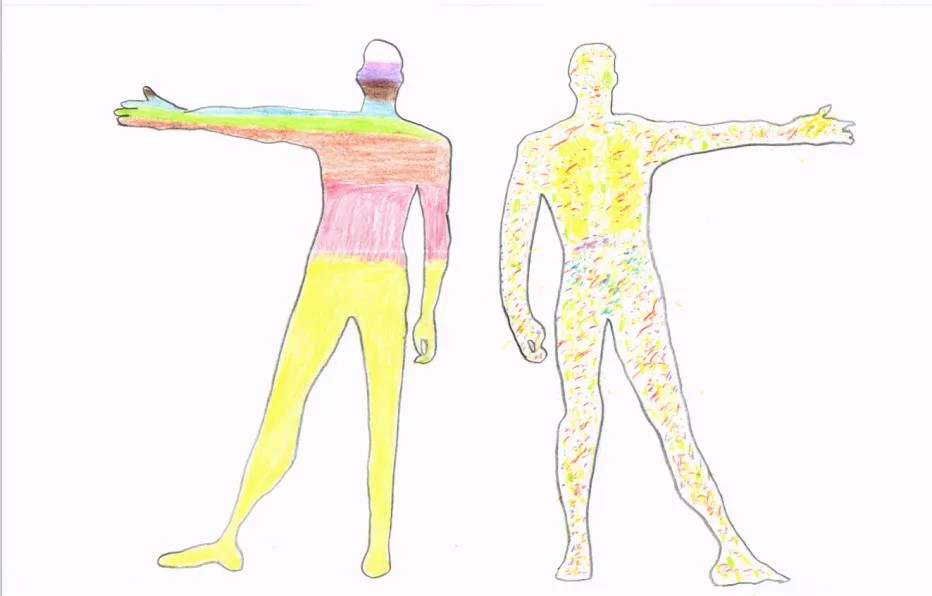


These pictures represent the atomic structure of the four most common elements in the human body, and some of the rarer elements within the body. (Top 2 drawings). The first drawing is of the four most common elements in the body, the second drawing is of the rarer elements of the body. In the third drawing, the human on the left is colored to show approximate percentages of those elements. The space that is left white is representative of elements that were left out of my project. The human on the right has all of the same elements as the human on left, but it is displaying where they are distributed throughout the body. For example, there is a yellow (oxygen) mass in the lung area.

My partner for the STEAM project is Jessup Hanson. Jessup’s project is titled “The Human Elements” and covers the objective “identify the four most abundant elements in the human body.” The medium Jessup used for the project was drawing with colored pencils.
Jessup drew three different pictures for his project. The first picture is a drawing of the atomic structure of the four most common elements in the human body, hydrogen, carbon, oxygen, and nitrogen. The second drawing is of the atomic structure of four of the most rare elements in the human body. The last drawing is a drawing of the human body facing two different ways. In the first view, Jessup colored each element a different color with the amount of color representing the approximate percentage of that element in the body, starting inferiority with the largest percentage and moving superiority with the lowest percentage element. The second view represents how the elements are distributed throughout the body.
My favorite part of Jessup’s project are the drawings of the body. These drawings allow the viewer to visualize the prevalence of the elements in the body. These drawings make it easy to visualize how oxygen is the most prevalent element in the human body at approximately 65%, while carbon is the second most prevalent element though it is much less prevalent at approximately 18%.
Nice work on this project, Jessup!